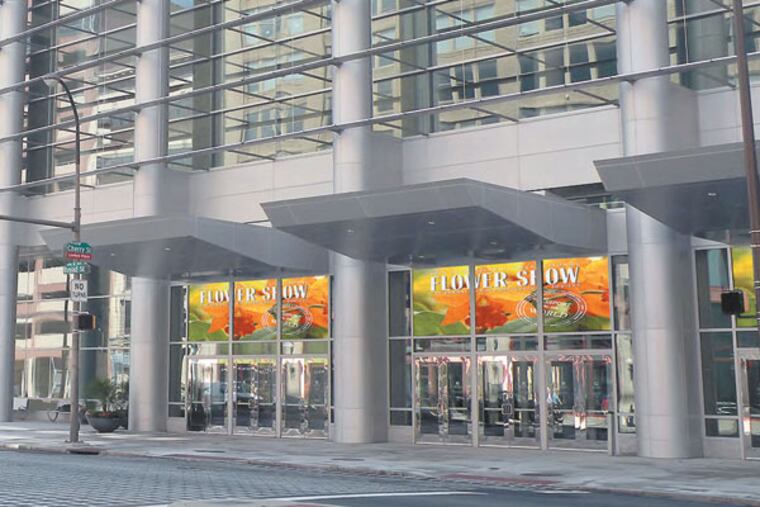Convention Center board wants to install digital signage
The high-ceilinged grand entrance to the expanded Convention Center at 111 N. Broad St. made its debut in spring 2011.

The high-ceilinged grand entrance to the expanded Convention Center at 111 N. Broad St. made its debut in spring 2011.
Nearly two years later, it's still hard to tell. There's nothing to indicate that the building is, indeed, the Convention Center.
To change that, the Convention Center Authority board is pushing to install digital signs above the three entrances facing North Broad Street.
The signs could be changed for different events, such as the annual Philadelphia Auto and Flower Shows - the two largest draws every year - and could potentially generate revenue if the board decided to charge groups to use them to advertise their events at the center.
"The desire [for the signs] has been there for years," said Joseph Resta, project executive at the Convention Center Authority. "This is one of the things that we needed to really wait on until we could safely say there was enough money in the expansion budget."
"We had to make sure there was nothing else pending that would compete for that money," from $200,000 to $800,000, Resta said. "There is enough money for it now."
At its meeting in mid-November, the board expressed interest in having the signs. Other major buildings along North Broad, including the Pennsylvania Academy of the Fine Arts, the Masonic Temple, and Arch Street United Methodist Church, have their names engraved on their facades.
"We're just starting the process," said Convention Center Authority president and chief executive officer Ahmeenah Young. "We're looking at it, not necessarily as a revenue generator at this point, but more to increase our presence and identify our presence on Broad Street."
Added Resta: "The revenue could be a possibility. We will pursue that market, if it exists."
The 15-member board would have to obtain state building permits for the signs, said Resta, and have them designed and installed, a process that could take many months.
He said he hoped to have the signs in place by the end of the year, adding, "As we get further along in the process, including getting the concept designed and the specifications, we will let groups know."
Lack of identifying markings along Broad Street has not been an issue with conventioneers, since many still use the building's entrance at 12th and Arch Streets, Resta said. Signs would be more for symbolic reasons.
"Even the Reading Terminal Market has signage," Young said. "We need a welcoming asset to our conventioneers."
The Lighting Practice, the Philadelphia lighting-design firm that installed the LED lights that adorn the Convention Center at night, also will handle the signs, Resta said.
"Without knowing the size, scope, and cost of the signs, it is difficult to assess the viability for the Auto Show," said Kevin Mazzucola, executive director of the Automobile Dealers Association of Greater Philadelphia, which owns and produces the show.
The Pennsylvania Horticultural Society, which produces the annual Philadelphia Flower Show, also said it was too early to comment about the signs.
But Jack Ferguson, president and CEO of the Philadelphia Convention and Visitors Bureau, which books the Convention Center, embraced the idea.
"Digital signage can be very impactful and informative when designed well," Ferguson said. "It can enhance a neighborhood and provide much-needed promotion of the events in the center, which is a great selling tool, especially for shows looking to get a message across.
"Being that it would be located on North Broad," said Ferguson, "it brings even more evening animation to the street."